All Courses & Ebooks

FREE
In this video, an instructor discusses the cooling system in an automobile. The cooling system is necessary to regulate the temperature of the engine and prevent it from overheating. The instructor explains that the cooling system includes a radiator, water pump, thermostat, and hoses. The radiator is responsible for removing heat from the coolant by transferring it to the air that flows through the fins on the radiator. The water pump circulates the coolant through the engine block and radiator, while the thermostat regulates the temperature of the coolant. The hoses connect all the components of the cooling system together. The instructor emphasizes the importance of proper maintenance of the cooling system, including checking the coolant level, inspecting hoses for leaks, and replacing the thermostat periodically. The video concludes with a reminder to refer to the vehicle's owner's manual for specific maintenance intervals and procedures.

FREE
The lubricating system is a crucial part of an automobile's engine that reduces friction between the moving parts and increases the lifespan of the engine. The system circulates oil through the engine to lubricate all the moving parts. It comprises a lubricant, a pump, and a filter. The oil pump forces the lubricant through the filter and into the engine. The filter removes impurities from the oil, and the lubricant coats and protects the engine's metal surfaces. The oil pan collects the oil as it drains from the engine, and it is then pumped back into the engine to continue the cycle. A properly functioning lubrication system is essential for an engine's longevity and performance.

FREE
In the Wheel Alignment lesson for Automobile Level 3, learners are taught about the importance of wheel alignment and how to perform it correctly. The lesson covers the different types of wheel alignment, including front-end and four-wheel alignment, and explains the effects of poor wheel alignment on vehicle performance and tire wear. Learners will also be introduced to the tools and equipment needed to perform wheel alignment, as well as the procedures for adjusting caster, camber, and toe angles. By the end of the lesson, learners should have a solid understanding of wheel alignment principles and techniques, and be able to perform basic wheel alignment tasks on a variety of vehicles.

FREE
In the Cylinder Head & Accessories lesson of Automobile Level 3, students learn about the construction, function, and maintenance of the cylinder head and related components in an automobile engine. Topics covered include the different types of cylinder heads, the role of valves and valve guides, the function of the camshaft, and the importance of proper maintenance of the cylinder head. Students will also learn how to identify and diagnose common problems with the cylinder head, such as valve wear, valve guide wear, and camshaft wear. Overall, this lesson provides a comprehensive understanding of the importance of the cylinder head and accessories in maintaining the health and performance of an automobile engine.
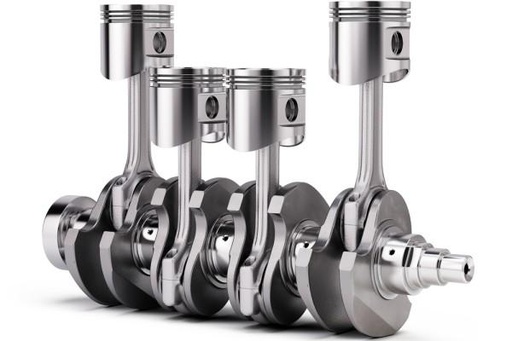
FREE
Crankshaft removal is a task that is typically performed during an engine overhaul or repair in automobiles. It involves removing the crankshaft, which is the part of the engine that converts the linear motion of the pistons into rotational motion. The crankshaft is a complex component with several bearings and journals, so it must be removed carefully to avoid damage. During the process, the engine block is disassembled, and various accessories such as the timing belt and oil pump are removed to gain access to the crankshaft. Once the crankshaft is removed, it can be inspected for wear or damage and either repaired or replaced if necessary. The task requires specialized tools and knowledge of engine mechanics, and should only be performed by experienced professionals.
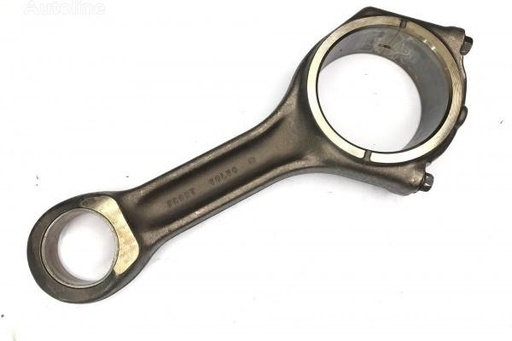
FREE
In this video lesson for Automobile Level 3, the instructor demonstrates how to disassemble the piston and connecting rod from an engine. The instructor begins by explaining the importance of removing the oil pan and the cylinder head to access the piston and connecting rod. They then show how to remove the piston rings and the connecting rod cap before separating the piston from the connecting rod. Throughout the lesson, the instructor provides helpful tips and best practices to ensure a successful disassembly process.
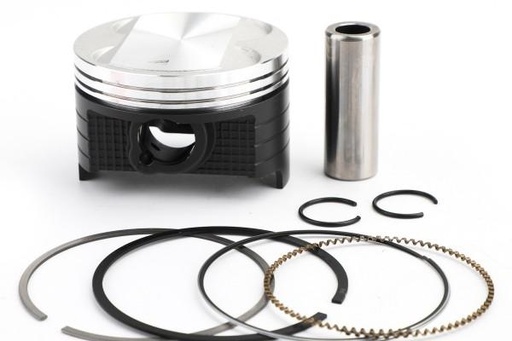
FREE
This video lesson on Automobile Level 3 covers the process of reassembling the piston rings and connecting rods, as well as installing the crankshaft. The instructor starts by demonstrating how to properly align the piston rings and install them onto the piston, ensuring that the gaps are correctly positioned. They then show how to lubricate and install the connecting rod bearings onto the rod, and how to properly torque the connecting rod bolts.
Next, the video covers the process of installing the pistons and connecting rods into the engine block, and how to properly torque the connecting rod cap bolts. Finally, the instructor shows how to install the crankshaft and properly torque the main bearing cap bolts, ensuring that the engine is correctly assembled and ready for use.
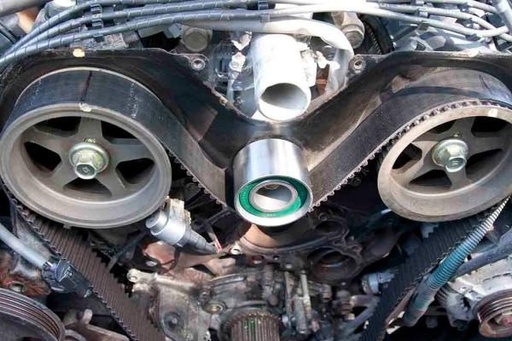
FREE
In this video lesson on Engine Timing at the Automobile Level 3, the instructor explains the process of properly aligning the timing marks on the engine to ensure that the valves and pistons move in sync. The video covers the different components involved in engine timing, including the crankshaft, camshaft, timing chain/belt, and tensioner. The instructor also demonstrates how to check the timing with a timing light, and how to adjust the timing if necessary. Additionally, the video covers common problems that can occur with engine timing, such as bent valves or damaged pistons, and how to diagnose and repair these issues.
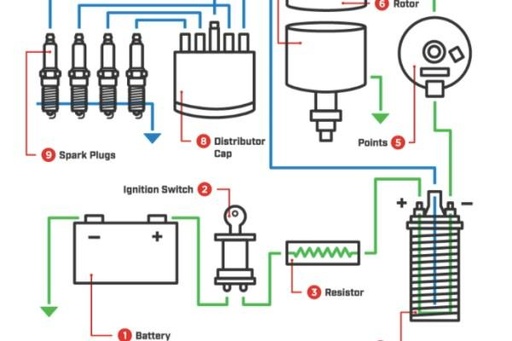
FREE
In this video lesson, learners will be introduced to the ignition system of an engine. The instructor will explain the importance of the ignition system and its components, such as the battery, ignition coil, distributor, spark plugs, and more. The learners will be shown how to test and troubleshoot these components using a multimeter, and will also learn about common issues that can affect the ignition system and how to fix them. By the end of the lesson, the learners will have a good understanding of how the ignition system works and how to maintain it properly.
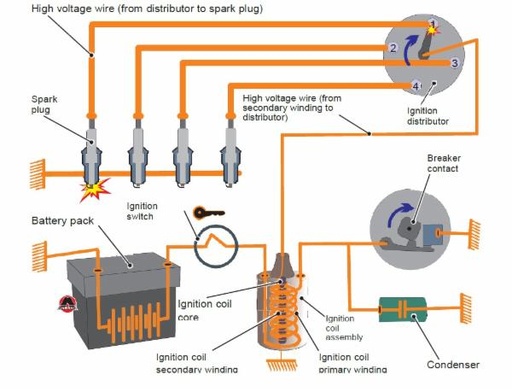
FREE
This video lesson introduces the concepts of pneumatics and hydraulics, explaining their principles and applications in various industries. It covers the basic components of pneumatic and hydraulic systems, their functions, and the advantages of using these systems in automation and control. The lesson also highlights safety considerations and maintenance practices.
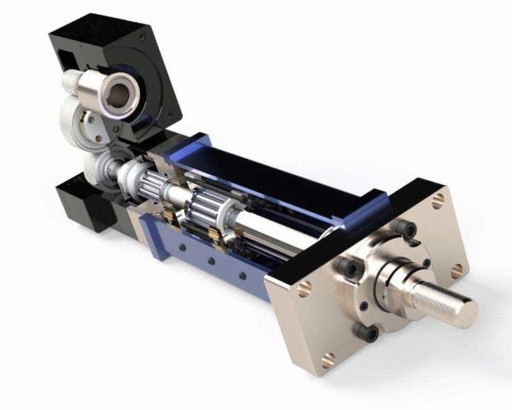
FREE
This video lesson focuses on sensors and actuators in automotive systems. It explores the different types of sensors and actuators used in modern vehicles and their role in monitoring and controlling various functions. The lesson covers sensor calibration, diagnostics, and troubleshooting methods, providing a valuable insight into automotive technology.

FREE
This video lesson delves into engine scanning techniques at Level 4 in the field of automobile technology. It explores the use of scanning tools and diagnostic equipment to analyze and troubleshoot engine performance. The lesson covers interpreting scan tool data, identifying common engine issues, and implementing appropriate repair procedures.
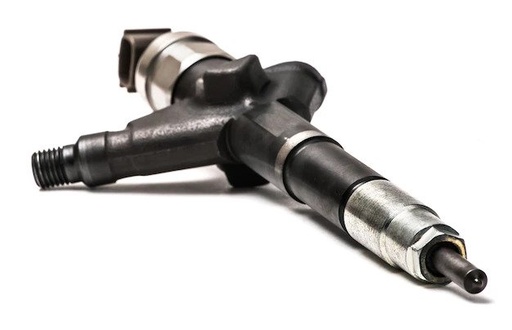
FREE
This video lesson focuses on injector nozzles at Level 5 in automobile technology. Viewers will learn about the function and operation of injector nozzles in fuel injection systems. The lesson covers troubleshooting common injector nozzle issues, maintenance procedures, and the significance of proper fuel atomization for optimal engine performance.
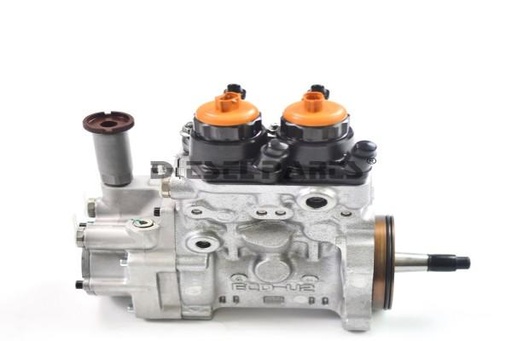
FREE
In this video lesson, viewers will explore distributor injector pumps at Level 5 in automobile technology. The lesson covers the components, function, and operation of distributor injector pumps in diesel engines. Viewers will gain insights into the calibration, repair, and maintenance of distributor injector pumps for efficient fuel delivery and engine performance.

FREE
National Occupational Standards for the Engineering Sector in Nigeria - Articulated Vehicle Driving - Levels 3.
Approved by the National Board for Technical Education (NBTE) - National Skills Qualification (NSQ), Nigeria
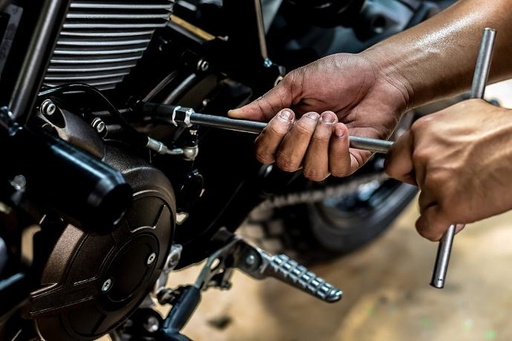
FREE
National Occupational Standards for the Engineering Sector in Nigeria - Motorcycle Maintenance & Repairs - Levels 1 & 2.
Approved by the National Board for Technical Education (NBTE) - National Skills Qualification (NSQ), Nigeria

FREE
National Occupational Standards for the Engineering Sector in Nigeria - Tricycle Maintenance & Repairs - Levels 1 & 2.
Approved by the National Board for Technical Education (NBTE) - National Skills Qualification (NSQ), Nigeria
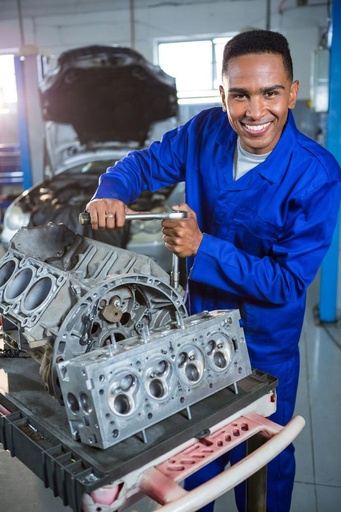
FREE
The Youth Explore Trades Skills Activity Plans are teacher resources designed to help students explore careers in trades and skills-related disciplines.
These activity plans are specifically designed to introduce students to trades and skills through activities that provide valuable hands-on experience. Through exposure to modules like these students will be able to make better informed career decisions.
The activities in the Automotive Service Technician module exposes students to fundamental automotive skills as well as knowledge and attitudes needed for a career as a automotive technician.
In this module includes activity description, images, video links, terminology, lesson procedure, quizzes and assessment guidelines.
Author: Industry Training Authority Apprenticeship Programs, British Columbia
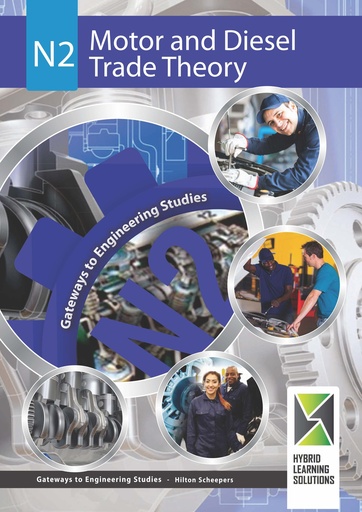
N 4,000
N2 Motor and Diesel Trade Theory is one of many publications introducing the gateways to Engineering Studies. This ebook is designed to develop the skills for learners that are studying toward an artisanship in modern automotive services fields and to assist them to achieve their full potential.
This ebook, with its modular competence-based approach, is aimed at assisting facilitators and learners alike. With its comprehensive understanding of the engineering construction environment.
The subject mater is presented as worked examples in the problem-solving-result methodology sequence, supported by numerous and clear illustrations. Practical activities are included throughout the book. The author is one who is well known and respected in the manufacturing, engineering and related technology fields. Their extensive experience provides an excellent base for further study, as well as a broad understanding of the technology and the knowledge to succeed.
Author: Hilton Scheepers, Hybrid Learning Solutions
Yes, indeed! You can access the first chapter of this ebook for review prior to making a purchase.
Upon purchasing this ebook, you will be granted full access for a period of one year.
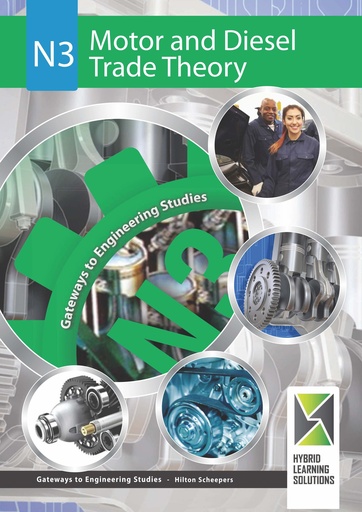
N 4,000
N3 Motor and Diesel Trade Theory is one of many publications introducing the gateways to Engineering Studies. This ebook is designed to develop the skills for learners that are studying toward an artisanship in modern automotive services fields and to assist them to achieve their full potential.
This ebook, with its modular competence-based approach, is aimed at assisting facilitators and learners alike. With its comprehensive understanding of the engineering construction environment.
The subject mater is presented as worked examples in the problem-solving-result methodology sequence, supported by numerous and clear illustrations. Practical activities are included throughout the book. The author is one who is well known and respected in the manufacturing, engineering and related technology fields. Their extensive experience provides an excellent base for further study, as well as a broad understanding of the technology and the knowledge to succeed.
Author: Hilton Scheepers, Hybrid Learning Solutions
Yes, indeed! You can access the first chapter of this ebook for review prior to making a purchase.
Upon purchasing this ebook, you will be granted full access for a period of one year.
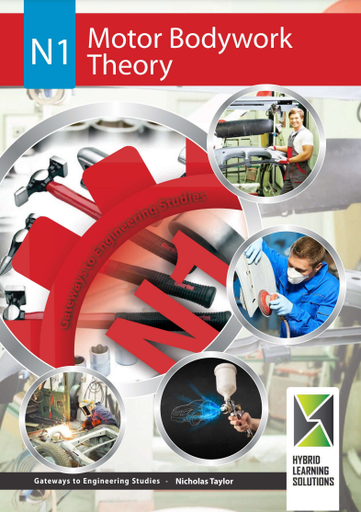
N 4,000
Motor Bodywork Theory N1 is one of many publications introducing the gateways to Engineering Studies. This ebook is designed to develop the skills for learners that are studying toward an artisanship in modern automotive services fields and to assist them to achieve their full potential.
This ebook, with its modular competence-based approach, is aimed at assisting facilitators and learners alike. With its comprehensive understanding of the engineering construction environment.
The subject mater is presented as worked examples in the problem-solving-result methodology sequence, supported by numerous and clear illustrations. Practical activities are included throughout the book. The author is one who is well known and respected in the manufacturing, engineering and related technology fields. Their extensive experience provides an excellent base for further study, as well as a broad understanding of the technology and the knowledge to succeed.
Author: Nicholas Taylor, Hybrid Learning Solutions
Yes, indeed! You can access the first chapter of this ebook for review prior to making a purchase.
Upon purchasing this ebook, you will be granted full access for a period of one year.
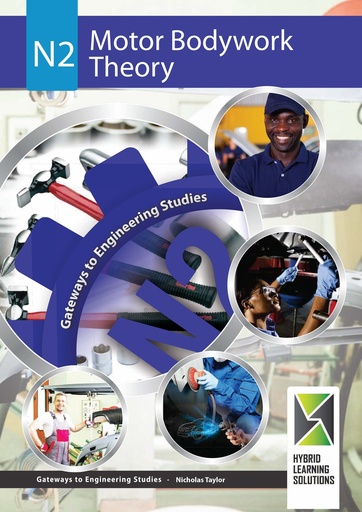
N 4,000
Motor Bodywork Theory N2 is one of many publications introducing the gateways to Engineering Studies. This ebook is designed to develop the skills for learners that are studying toward an artisanship in modern automotive services fields and to assist them to achieve their full potential.
This ebook, with its modular competence-based approach, is aimed at assisting facilitators and learners alike. With its comprehensive understanding of the engineering construction environment.
The subject mater is presented as worked examples in the problem-solving-result methodology sequence, supported by numerous and clear illustrations. Practical activities are included throughout the book. The author is one who is well known and respected in the manufacturing, engineering and related technology fields. Their extensive experience provides an excellent base for further study, as well as a broad understanding of the technology and the knowledge to succeed.
Author: Nicholas Taylor, Hybrid Learning Solutions
Yes, indeed! You can access the first chapter of this ebook for review prior to making a purchase.
Upon purchasing this ebook, you will be granted full access for a period of one year.
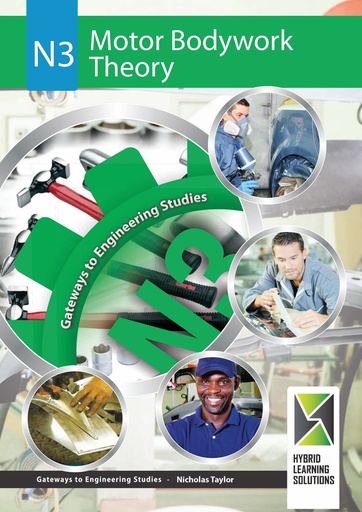
N 4,000
N3 Motor Bodywork Theory is one of many publications introducing the gateways to Engineering Studies. This ebook is designed to develop the skills for learners that are studying toward an artisanship in modern automotive services fields and to assist them to achieve their full potential.
This ebook, with its modular competence-based approach, is aimed at assisting facilitators and learners alike. With its comprehensive understanding of the engineering construction environment.
The subject mater is presented as worked examples in the problem-solving-result methodology sequence, supported by numerous and clear illustrations. Practical activities are included throughout the book. The author is one who is well known and respected in the manufacturing, engineering and related technology fields. Their extensive experience provides an excellent base for further study, as well as a broad understanding of the technology and the knowledge to succeed.
Author: Nicholas Taylor, Hybrid Learning Solutions
Yes, indeed! You can access the first chapter of this ebook for review prior to making a purchase.
Upon purchasing this ebook, you will be granted full access for a period of one year.
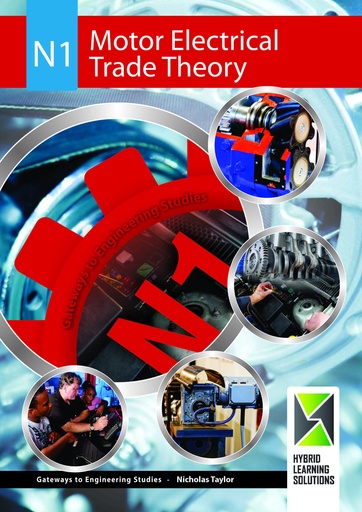
N 4,000
Motor Electrical Trade Theory N1 is one of many publications introducing the gateways to Engineering Studies. This ebook is designed to develop the skills for learners that are studying toward an artisanship in modern automotive services fields and to assist them to achieve their full potential.
This ebook, with its modular competence-based approach, is aimed at assisting facilitators and learners alike. With its comprehensive understanding of the engineering construction environment.
The subject mater is presented as worked examples in the problem-solving-result methodology sequence, supported by numerous and clear illustrations. Practical activities are included throughout the book. The author is one who is well known and respected in the manufacturing, engineering and related technology fields. Their extensive experience provides an excellent base for further study, as well as a broad understanding of the technology and the knowledge to succeed.
Author: Nicholas Taylor, Hybrid Learning Solutions
Yes, indeed! You can access the first chapter of this ebook for review prior to making a purchase.
Upon purchasing this ebook, you will be granted full access for a period of one year.
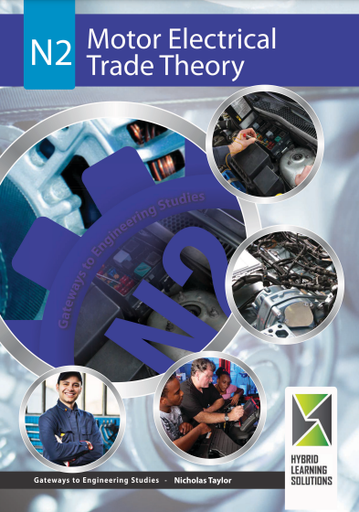
N 4,000
Motor Electrical Trade Theory N2 is one of many publications introducing the gateways to Engineering Studies. This ebook is designed to develop the skills for learners that are studying toward an artisanship in modern automotive services fields and to assist them to achieve their full potential.
This ebook, with its modular competence-based approach, is aimed at assisting facilitators and learners alike. With its comprehensive understanding of the engineering construction environment.
The subject mater is presented as worked examples in the problem-solving-result methodology sequence, supported by numerous and clear illustrations. Practical activities are included throughout the book. The author is one who is well known and respected in the manufacturing, engineering and related technology fields. Their extensive experience provides an excellent base for further study, as well as a broad understanding of the technology and the knowledge to succeed.
Author: Nichola Taylor, Hybrid Learning Solutions
Yes, indeed! You can access the first chapter of this ebook for review prior to making a purchase.
Upon purchasing this ebook, you will be granted full access for a period of one year.
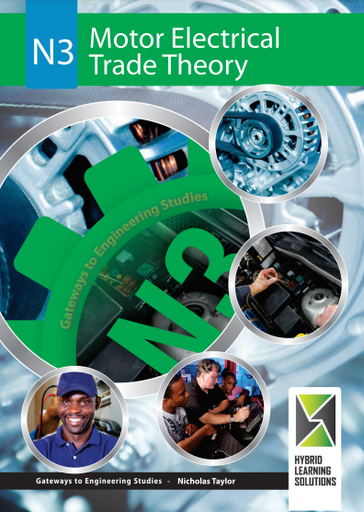
N 4,000
Motor Electrical Trade Theory N3 is one of many publications introducing the gateways to Engineering Studies. This ebook is designed to develop the skills for learners that are studying toward an artisanship in modern automotive services fields and to assist them to achieve their full potential.
This ebook, with its modular competence-based approach, is aimed at assisting facilitators and learners alike. With its comprehensive understanding of the engineering construction environment.
The subject mater is presented as worked examples in the problem-solving-result methodology sequence, supported by numerous and clear illustrations. Practical activities are included throughout the book. The author is one who is well known and respected in the manufacturing, engineering and related technology fields. Their extensive experience provides an excellent base for further study, as well as a broad understanding of the technology and the knowledge to succeed.
Author: Nicholas Taylor, Hybrid Learning Solutions
Yes, indeed! You can access the first chapter of this ebook for review prior to making a purchase.
Upon purchasing this ebook, you will be granted full access for a period of one year.
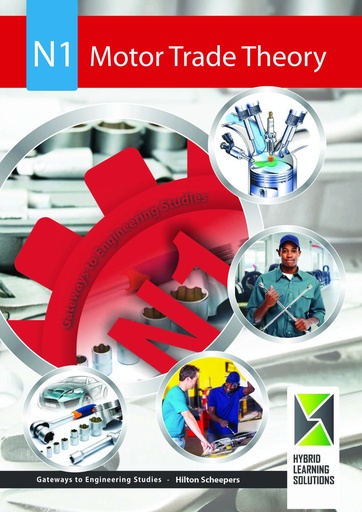
N 4,000
N1 Motor Trade Theory is one of many publications introducing the gateways to Engineering Studies. This ebook is designed to develop the skills for learners that are studying toward an artisanship in modern automotive services fields and to assist them to achieve their full potential.
This ebook, with its modular competence-based approach, is aimed at assisting facilitators and learners alike. With its comprehensive understanding of the engineering construction environment.
The subject mater is presented as worked examples in the problem-solving-result methodology sequence, supported by numerous and clear illustrations. Practical activities are included throughout the book. The author is one who is well known and respected in the manufacturing, engineering and related technology fields. Their extensive experience provides an excellent base for further study, as well as a broad understanding of the technology and the knowledge to succeed.
Author: Hilton Scheepers, Hybrid Learning Solutions
Yes, indeed! You can access the first chapter of this ebook for review prior to making a purchase.
Upon purchasing this ebook, you will be granted full access for a period of one year.